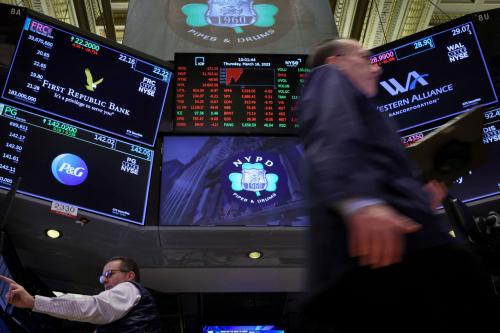This week, the U.S. free trade agreement with South Korea, which Congress approved last fall, finally came into effect. It has been expected to increase American exports by up to $12 billion and help create much needed jobs in the U.S.
However, Americans could have been reaping the benefits of increased trade with South Korea from as early as 2007, when the agreement was first negotiated under the George W. Bush. Why then is the deal only taking effect now?
The final agreement was delayed until late last year because the Obama administration and Republicans were fighting over minor details, such as improved market access for certain goods and retraining programs for American workers. But, what finally pushed Congress to pass the deal was probably not a resolution of these issues. Instead, a similar agreement between South Korea and the European Union came into force just a few months prior and the specter of U.S. exports losing out to EU goods in South Korea forced the Congress to act swiftly.
This push by countries to one up each other with trade agreements is a consequence of what Bob Zoellick, former U.S. trade representative, calls “competitive liberalization” or what I call a game of catch-up. Basically, when a bilateral free trade agreement grants one country preferential market access in another, nations outside the agreement are forced to play catch-up by negotiating their own trade deals with these countries.
This game of catch-up is being played out by the world’s major economies as they scramble to secure bilateral trade agreements with each other. Japan is currently seeking to negotiate a deal with the EU to avoid any loss of exports to Europe that might result from the EU-South Korea free trade agreement. Meanwhile, Japan is also anxiously working with the U.S. on a deal since the U.S.-South Korea agreement has now taken effect. And when Japan announced at last year’s Asia Pacific Economic Cooperation meeting its interest in joining the Trans-Pacific Partnership talks – a regional free trade agreement that includes the U.S. and eight other countries – in quick succession Canada and Mexico also expressed interest so as not to be left out of any deal that would give their competitors preferential trade access to Japan. China is also keen to negotiate a free trade deal with Japan and South Korea, and the U.S. and the EU have started discussions on how to further integrate their economies.
However, there is a major problem with this game of catch-up. For one, the benefits of bilateral free trade agreements are limited to those countries that are part of the deal. They generally do not reflect the realities of doing business globally, where supply chains are often located across many countries. They can also create steep transaction costs for businesses since such deals often include complex rules spread across multiple agreements and countries. In the end, these agreements often end up diverting global free trade instead of creating it.
Only a global free trade deal negotiated by the World Trade Organization can resolve the conflicting bilateral agreements and create a set of consistent trade rules that maximizes global growth.
Therefore, instead of playing catch-up, governments should reinvigorate the almost 10-year-old Doha round of global trade negotiations. To do this, governments must make the WTO more relevant for today’s multinational companies. This means updating the Doha agenda to better reflect current international economic priorities, such as reducing supply chain costs from unnecessary regulation, developing rules to promote foreign investment, and eliminating barriers to trade in green goods and services.
In the meantime, the number of bilateral trade agreements is only likely to increase as countries continue to play the game of catch-up. Thus, governments need to harness this enthusiasm to liberalize trade and channel it back into the WTO process and Doha trade negotiations. One way of doing this is to incorporate these bilateral trade agreements more directly into the structure of the World Trade Organization. This could be achieved by giving the WTO greater oversight of bilateral and regional free trade agreements, ensuring that they comply with a common set of rules.
Global trade liberalization underpinned by a set of consistent trade rules is the best possible scenario for promoting growth and welfare in the United States and abroad. The challenge is to take advantage of this game of free trade catch-up and channel this interest back into the multilateral negotiation process in the World Trade Organization.



Commentary
Op-edA Game of Free Trade Catch-Up
March 16, 2012